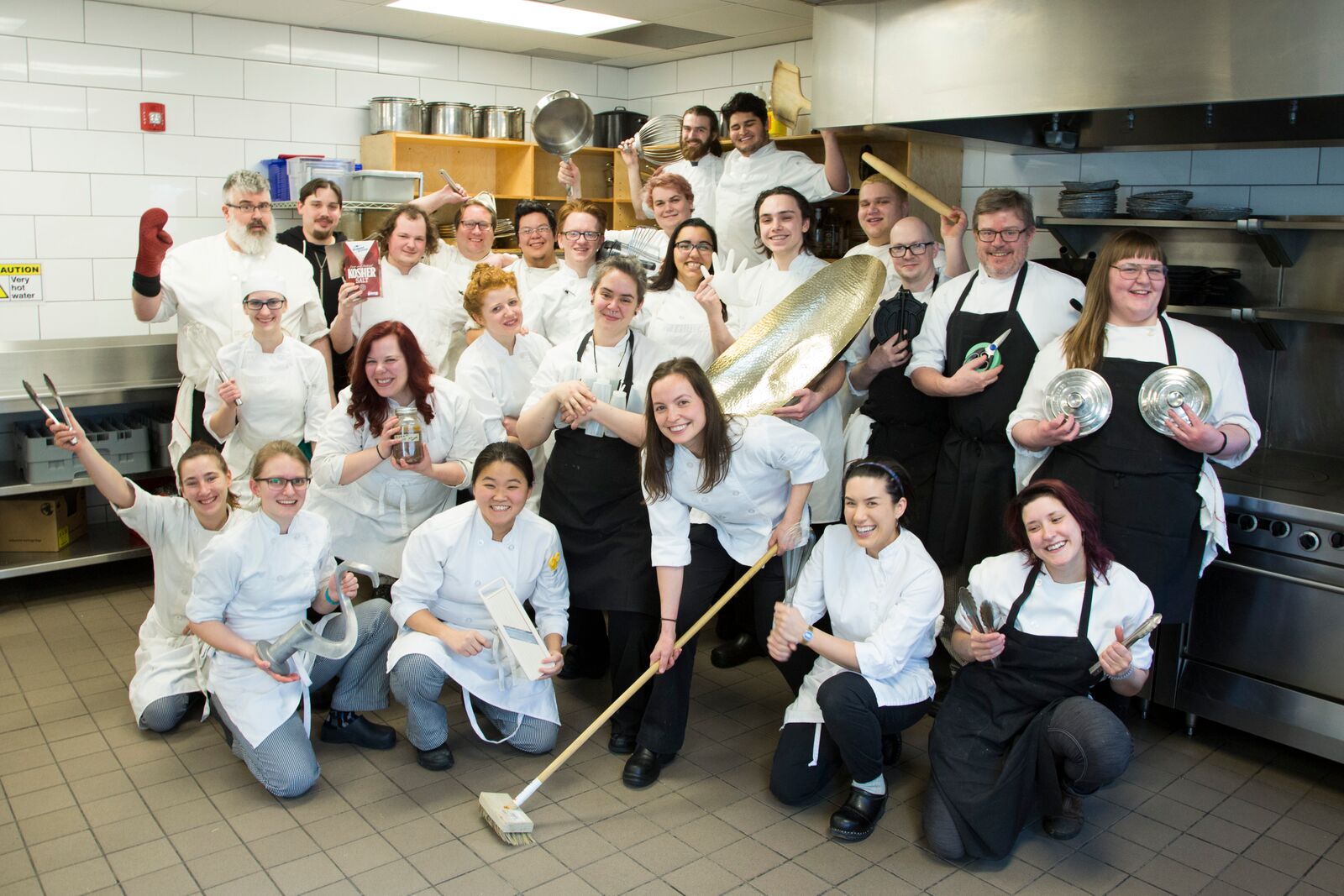I am originally from Montreal, but moved to Kingston to attend Queen’s University, where I studied Philosophy and Classics. I fell in love with the hospitality industry while I was still in school, and ultimately decided to pursue a career in the kitchen. A chance meeting with the then-Executive Director of SCS (KP!) while working in a restaurant owned by SCS Alumni (Olivea!) brought me to Stratford to study, and now Stratford is home. I worked under Chef Neil Baxter at Rundles restaurant for 6 years, at Pazzo Taverna with Yva Santini this past season, and in the off-season, I am the Program Manager of SCS, as well as an instructor in both the kitchen and the classroom.
What is your favourite restaurant?
I am passionate about traditional Jewish cuisines, and Jewish delicatessen in particular. My ideal restaurant is probably a chimera, with the meat from Lester’s, the party sandwiches from Snowdon Deli, the babka from Cheskie’s, my mom’s matzo ball soup, the chopped liver from Moishe’s, the service from Schwartz’s, the decor from the Brown Derby, and the overall vibe of Wilensky’s.

What is your favourite cookbook?
I collect cookbooks avidly, and I love them for all kinds of reasons; I like the pictures, I like the prose, I like reading recipes, I like learning how cuisines evolve in the hands of their practitioners, and I like them as objects (I like the bindings and the feel of the paper). My favourite cookbook is my mom’s copy of Second Helpings, Please, edited by Norene Gilletz. It is a community cookbook, originally printed in 1968 by the Mt. Sinai Chapter of Montreal B’nai Brith Women. The recipes are pretty dated, making liberal use of canned soups, fruit-flavoured gelatin and convenience foods, and offering different cookie mix-ins for husbands than for children or wives (it was after all, written in the late ‘60’s), and yet to me, this book captures the foods of my childhood and favourite holidays. Come Passover every year, I pull out that book and make the Second Helpings recipe for Charoset. I could make Charoset in my sleep; it is a 5 ingredient apple and walnut relish which could be improvised and elaborated upon by even the most novice cook, but I find myself craving that one, and I return to it every year. My mother received her copy from her own parents in 1971, when she married my father (this book was intended to be a primer on domesticity for young brides), and it is well-loved and dog-eared, and the pages are interleaved with other recipes written on scraps of paper or clipped from the Gazette (or the Star, even before that). I have my own copy, but I like my mom’s more; I like the notes in her handwriting, I like the stains, I like the way the colour of the paper has changed over time. I like that it is always in the exact same spot in the cupboard near the oven, and I like that I can probably predict which days of the year it will emerge from the cupboard and take up residency on the kitchen counter. “Second Helpings, Please” is more than a cookbook; it is a snapshot of a particular community at a particular time, and I love it because it speaks to me about my family history.
What is your guilty pleasure food?
I must confess: I don’t have any particularly guilty feelings about the trashy, trashy foods that bring me pleasure!
Favourite knife or kitchen tool?
I have a poor memory, so I always work with a small army of timers to keep me on task in the kitchen. I am also fairly hard of hearing, so my timers have to be loud. My favourite kitchen tool is the ThermoWorks Extra Big and Loud Kitchen Timer; it has big buttons, it doesn’t require an advanced degree in engineering to operate, and it emits an impressive 110 dB alarm.
What restaurant dish seemed the most intimidating but is actually really easy to make?
It is easier to make bread of exceptional quality than most people expect. Understanding a few basic principles and having a good sense of your surroundings will go a long way toward demystifying an otherwise really satisfying thing to do.
What is a new technique / flavour you are experimenting with currently?
Probably like many people reading this, I am captivated by the new Noma Guide to Fermentation. Last year I made black garlic and black shallots at school, to deploy as needed (which turned out to be all over the place!). I am now hugely interested in applying that technique to other vegetables and even fruit. That rich, malted umami note has a lot of potential for the foods I enjoy most, and I am excited about exploring that with my students.
Are there any recipes from SCS you still use?
Well, I mostly live here, so…
What is your best SCS memory?
My best SCS memory is when Darren MacLean organized a super secret, mildly sketchy, extracurricular underground whole animal butchery workshop. The local butcher hosted us in his cavernous basement, and guided us through the butchering and fabrication of a whole lamb. The experience was invaluable, and really cemented how supportive the broader Stratford community is for young chefs. Also, the starving students got to take home the fruits of their labour.

